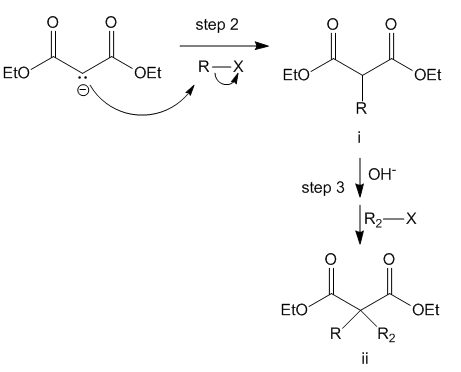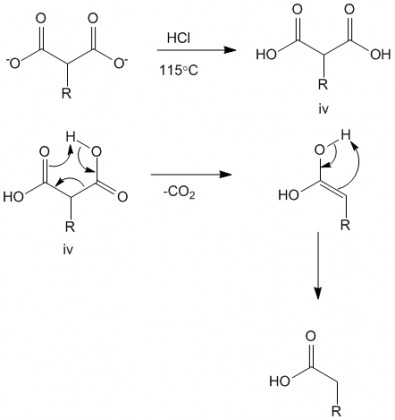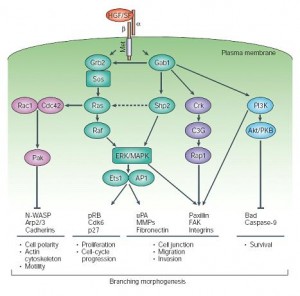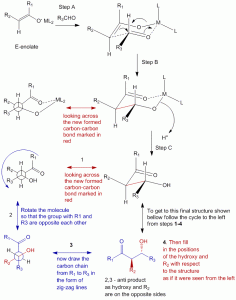This reaction is similar to acetoacetic ester synthesis.The alpha carbon on the malonic ester is relatively more acidic as compared to other esters. Alkylation at the alpha position of malonic esters can therefore be carried out with relatively mild bases such as sodium hydroxide (NaOH) or sodium ethoxide (NaOEt).
Malonic esters when reacted with alkyl halide (R-X) in the presence of base such as NaOH will produce α-alkylated esters. However, reaction will not stop there. Over time, the reaction will also give disubstituted products as well as free acids. This non-selective nature of the reaction makes it less useful for practical purposes but the mechanisms for this reaction are interesting to look at.
Mechanism of Malonic Ester Synthesis
Step 1
In the presence of base such as NaOH, the alpha – hydrogen of malonic ester can be abstracted to produce the carbanion which can resonate to form an enolate. Since the enolate can resonate on either side of the ester it is more stabilized and hence use of even mild bases can be made for this reaction.


Step 2 and Step 3
The enolate carbanion thus formed is capable of attacking the alkyl halide R-X as the halide is a good leaving group. This yields the mono-alkylated malonic ester (i). However, reaction does not stop there. Since the base and alkyl halide are present in the same solution, step 1 and 2 can repeat in step 3 to produce the disubstituted malonic ester (ii).
Note – For step 2 the carbanion shown below can exist as enolates in resonance structures (as shown above) – hence it can be shown using the illustration below or using enolates but with proper arrows indicating movement of electrons.

Step 4
The reaction does not stop there. In presence of base, the esters can undergo hydrolysis to yield a di-acid.

Step 5
Under acidic conditions and heating, this di-acid can loose one molecule of carbon dioxide to yield the alpha-alkyl carboxylic acid. This reaction can also happen with mono-acid ester.

Disadvantages:
As can be seen above the reaction does not complete to form one product but a number of intermediates. So separation and selectivity are a problem with malonic ester synthesis. However, this non-selective nature of malonic ester synthesis can be used advantageously to produce cyclic compounds. Another problem associated with this reaction is the possibility of getting O-alkylated product.
Books on Organic Chemistry
Check out some of the best textbooks for Organic Chemistry
References:
- Advanced Organic Chemistry: Reactions and synthesis. By Francis A. Carey, Richard J. Sundberg
- Organic-Chemistry.org (accessed on February 06, 2011)



thanx alot